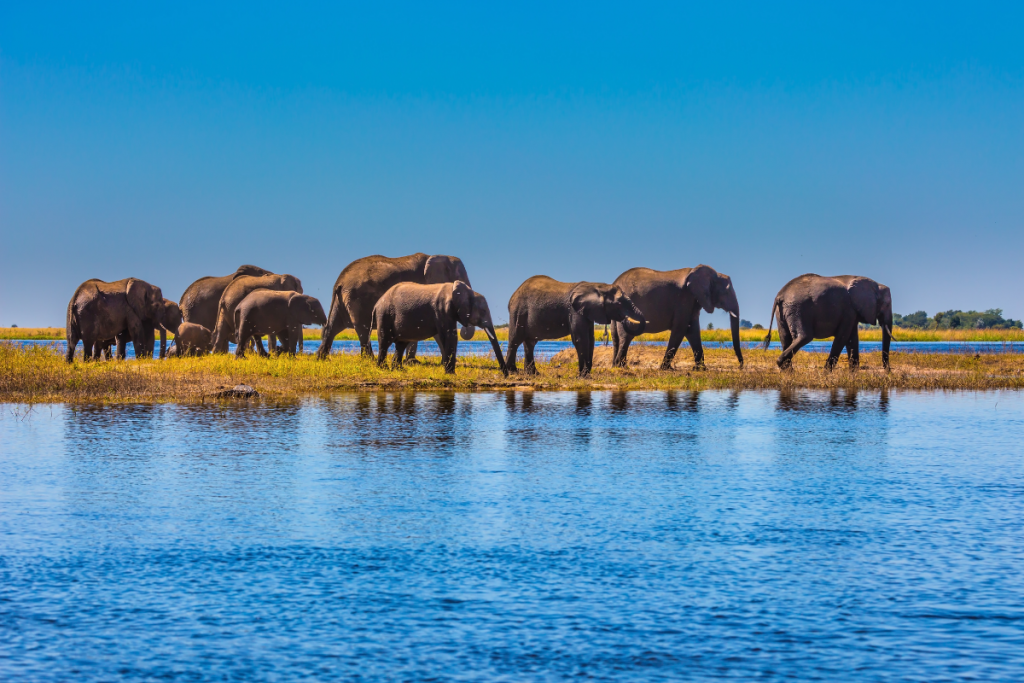What roils beneath the Earth’s surface may feel a world away, but the activity can help forge land masses that dictate ocean circulation, climate patterns, and even animal activity and evolution. In fact, scientists believe that a plume of hot rocks that burst from the Earth’s mantle millions of years ago could be an important part in the story of human evolution.
In a paper published in Nature Reviews Earth & Environment, an international team of researchers investigated the formation of a large land bridge that connected Asia and Africa 20 million years ago, through what is now the Arabian Peninsula and Anatolia.
The paper brings together previously published research with new models created at The University of Texas at Austin Jackson School of Geosciences and the GFZ Helmholtz Centre for Geosciences.
This gradual uplift of land enabled the early ancestors of animals such as giraffes, elephants, rhinoceroses, cheetahs, and even humans, to roam between Africa and Asia. The appearance of the land ended a 75-million-year-long isolation of Africa from other continents.
“This study has relevance to the question of ‘How did our planet change, in general? What are the connections between life and tectonics?’” said Thorsten Becker, a study co-author and professor at the Jackson School’s Department of Earth and Planetary Sciences and Institute for Geophysics.
The story begins 50-60 million years ago, when a slab of rock sliding into the Earth’s mantle created a “conveyor belt” for hot rocks to boil up in an underground plume that reached the surface some 30 million years later. This convective activity in the mantle, coupled with the collision of tectonic plates, created an uplift in land that contributed to closing the ancient Tethys Sea, splitting it into what is now the Mediterranean and Arabian Seas, and created a landmass that bridged Asia and Africa for the first time.
The study’s lead author Eivind Straume analyzed the wide-ranging consequences of this geologic activity while he was a postdoctoral fellow at the Jackson School. He said the appearance of the land bridge and animal evolution go hand in hand.
“The shallow seaway closed several million years before it otherwise likely would have due to these specific processes — mantle convection and corresponding changes in dynamic topography,” said Straume, who is now a postdoctoral fellow at NORCE Norwegian Research Centre and The Bjerknes Centre for Climate Research. “Without the plume, you could argue that the continental collision would have been different.”
In this case, timing is everything. If it had been an additional million years before Africa and Asia were connected, the animals that made their way into and out of Africa could have been on a different evolutionary path. That includes the ancestors of today’s humans.
Several million years before the land bridge had completely closed, the primate ancestors of humans came to Africa from Asia. While those primates ended up going extinct in Asia, their lineages diversified in Africa. Then when the land bridge fully emerged, these primates re-colonized Asia.
“It’s an example of how the long-term convective evolution of the planet talks to the evolution of life,” Straume said.
This uplift of the Arabian Peninsula also had significant impacts on ocean circulation and the Earth’s climate. Nearby ocean temperatures warmed, which in turn widened seasonal temperature ranges, and made a swath of land from north Africa to central Asia more arid. Researchers believe the formation of this land bridge was a final trigger in making the Sahara a desert. And these topographical changes enhanced monsoon season in Asia, making southeast Asia wetter.
This paper brings together existing research spanning plate tectonics, mantle convection, topography and paleogeography, evolutionary anthropology, mammal evolution, climate evolution, and ocean circulation, among other topics, to tell a cohesive story of the wide-ranging effects of these mantle dynamics.
“To us at least, this is a compelling — perhaps a little bit provocative — summary of recent advancements,” Becker said.

For more information, contact: Anton Caputo, Jackson School of Geosciences, 210-602-2085; Monica Kortsha, Jackson School of Geosciences, 512-471-2241; Constantino Panagopulos, University of Texas Institute for Geophysics, 512-574-7376; Julia Sames, Department of Earth and Planetary Sciences, 210-415-9556.

